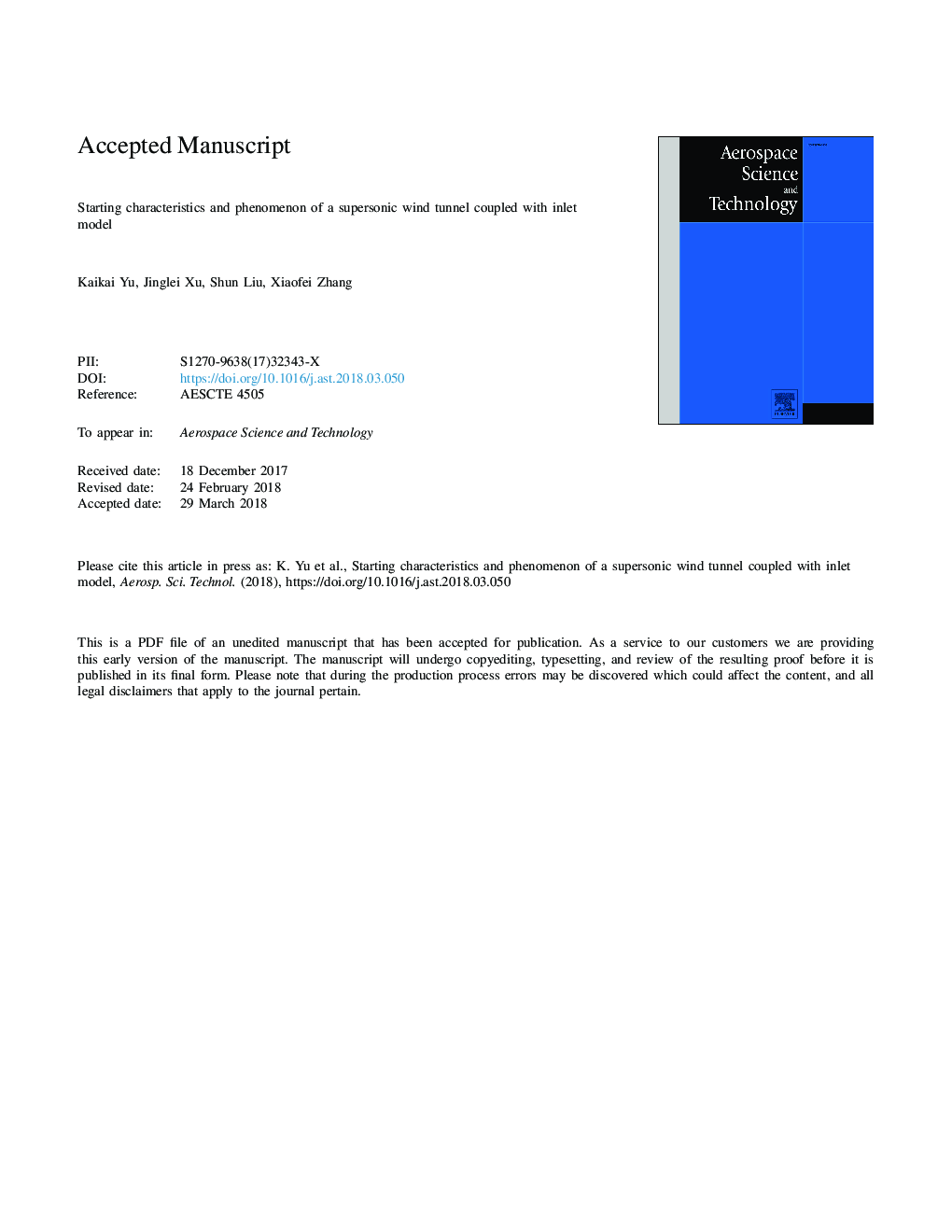| Article ID | Journal | Published Year | Pages | File Type |
|---|---|---|---|---|
| 8057745 | Aerospace Science and Technology | 2018 | 31 Pages |
Abstract
Supersonic wind tunnel is regarded the most efficient experimental facility for studying the performance of supersonic inlets. In view of this background, the starting problem of a wind tunnel coupled with the inlet model is a critical experimental issue. However, inlet experiments cannot be performed when wind tunnels do not start. To satisfy this requirement, this study adopts numerical simulations to examine the starting characteristics of a wind tunnel coupled with the inlet model to serve as a basis for observing the flow at the starting procedure. Results of steady simulation show that the wind tunnel coupled with the medium-sized inlet model is still at risk in the starting procedure, although the inlet size of the model is considerably smaller than the physical limitation. Furthermore, imposing high total pressure on the wind tunnel inlet can make the wind tunnel restart. However, results also reveal that gradually increasing total pressure does not necessarily restart the wind tunnel, as wind tunnels can start only when total pressure amplitude is large enough. To improve the understanding of the phenomena, unsteady numerical simulations with different total pressure levels are performed on the wind tunnel inlet. Numerical results demonstrate the importance of generating a moving shock wave with adequate intensity that can overcome the structure of the separation zones near wind tunnel walls after sweeping the inlet model. Under this influence, the separation zones become relatively smaller, thereby weakening the intensity of the deduced shock wave. Several changes to improve the startup of the wind tunnel are also observed, such as the attachment of the detached shock wave mechanism situated in front of the inlet model and the disappearance of the shock wave/boundary-layer interactions near the lower wall. These changes can reduce total pressure loss in the wind tunnel and prompt the wind tunnel to restart. In conclusion, a sudden increase in total pressure can easily start the wind tunnel. The valve of the wind tunnel should therefore be opened rapidly regardless whether the wind tunnel is in the starting or non-starting procedure.
Related Topics
Physical Sciences and Engineering
Engineering
Aerospace Engineering
Authors
Kaikai Yu, Jinglei Xu, Shun Liu, Xiaofei Zhang,
